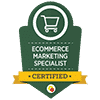Your marketing will be largely ineffective if you target the wrong people. You can be everything to everyone!
If you’re running a small business, a well-implemented, cost-effective marketing strategy is going to be exactly what you need to increase customer counts and sales. You know your product or service better than anyone, but marketing it to the masses is all a game in its own; and if you want to know how to win at the strategic marketing game, the first thing you’re going to have to do is identify who you’re marketing to and why.
Indiscriminate Marketing Is Largely Ineffective
When it comes to marketing a product or service, more views does not simply translate into more sales and more popularity. The internet is an endlessly expanding place that’s home to more entertainment and information to last a lifetime. If you’re going to stand out in this vast landscape, you’re going to need two critical things:
(1) a thorough understanding of what your product does
(2) and an understanding of who your product is meant to serve. Simply blanketing the surfaces of the web with product descriptions will not only cost you tons, but it will also prove to be largely ineffective.
Narrow-Down Your Audience
There are many ways in which you can narrow your target audience, and one of the best ways is to ask yourself two questions:
1. What needs does my product cater to/what problems does it solve?
This is arguably the most important question of the three, mainly because it’s, in essence, asking whether or not your product is even viable on the market.
There are a lot of entrepreneurs and small businesses that think they have just invented the next great household brand, but these delusions of grandeur are quickly expunged once the individuals become enveloped in a marketing environment that could care less for what they’re offering.
When you’re marketing a product or service, its primary value is going to need to be immediately visible. If people can’t figure out what your product does (which in reality should only take a few seconds) then your sales are going to reflect that.
2. Which groups of people are purchasing it most?
Think about your audience through the structure of a pyramid. At the base are all the people from one group who make up the largest portion of the audience; for example, if you’re selling a product specifically for women, the base group would be women. Above them, all the people from the second-largest group.
This pattern continues until you get to the tip of the pyramid: the portion of your audience that incorporates all (and perhaps more) of the elements that distinguished the groups below.
If you’re able to compartmentalize your audience in this way, you’ll be able to allocate resources accordingly. After all, why spend a ton of money marketing to people who were going to buy from you whether you reached out or not? That same amount could be used to target and persuade individuals who may be on the fence about purchasing your product.







